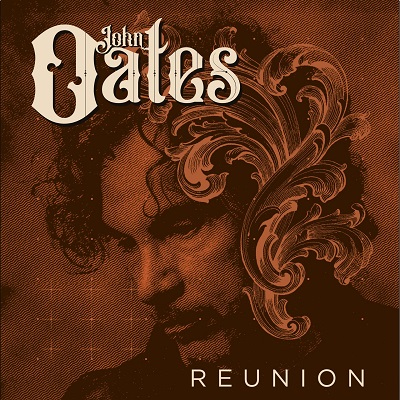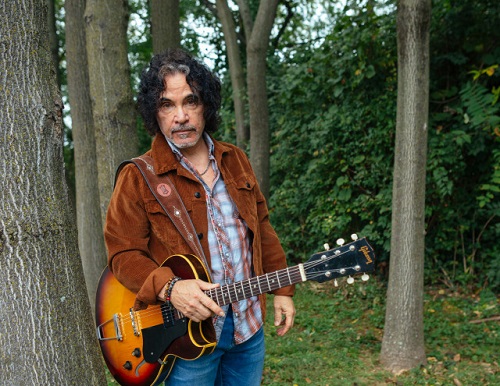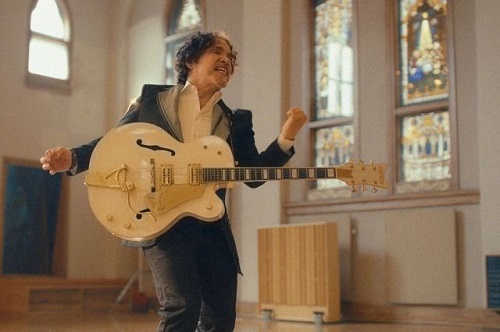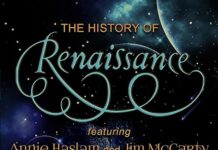By Chris Epting
As has been widely covered in the media as of late, both John Oates and Daryl Hall find themselves embarking on solo endeavors, each carving out new musical paths in their respective careers. While the duo’s collaborative legacy continues to shine brightly, Oates’ solo journey has taken on a life of its own, revealing a depth and versatility that speak to his enduring passion for music.
As he explained to me recently, “I’ve always felt compelled to write songs, and now I feel like my writing is getting better. And the people I’m associating myself with are bringing out something new in me. I’m finding excitement by collaborating with new people. The mechanics of the songwriting has not changed one iota from the early days. It’s still the same approach. It’s just that my ideas are different. I’m more concerned with saying things that are appropriate for who I am and where I’m at in my life now, so that’s what I want to get across. I’m also able to tap into those ideas and those emotions and I’m able to actualize them in a way that I couldn’t or didn’t want to before. I think it’s a matter of maturity; personal maturity and so, in turn, songwriting maturity.”
In the early 1960s, Oates was entranced by a diverse array of artists such as Doc Watson, Mississippi John Hurt, Sonny Terry, Brownie McGhee, and other folk, bluegrass and roots R&B luminaries. His passion for the roots of American popular music has always been a driving force in his artistic exploration, a love that has only deepened over the years.
The decision to move to Nashville in the early 2000s proved to be a pivotal moment for Oates, allowing him to reconnect with his musical roots and deeply explore the rich tapestry of Americana. Across seven solo albums, Oates has deftly blended these influences with his own signature style, creating a body of work that is both homage and innovation.
For Oates, the new reality of pursuing solo endeavors has not slowed him down; rather, it has raised the creative stakes and pushed him to explore new musical spaces. His latest album, Reunion (available May 17), stands as a testament to Oates’ artistic evolution and his unwavering commitment to pushing the boundaries of his craft.

Oates is joined by a stellar lineup of musical friends including Sam Bush, Jerry Douglas, Béla Fleck, Guthrie Trap, and Sierra Hull, among others, who contribute their talents to enrich the sonic landscape of the record. This collaborative spirit infuses the album with a dynamic energy that showcases Oates’ ability to adapt and evolve while staying true to his musical roots.
One collaboration in particular that rose to the top was with singer and songwriter A.J. Croce, son of the late Jim Croce. Oates described for me how that came about.
“I always knew that he had a really great reputation, and when we did the John Prine show at the Ryman Auditorium in Nashville, we found ourselves in the same dressing room. We had never met and hit it off immediately. Instant camaraderie. He’s a real music fanatic and he has his father’s amazing, extensive, and eclectic record collection. The music goes back to the 1920s; an incredible collection that has obviously taught him a lot. He has a real depth of knowledge, and he also has a real appreciation for this kind of arc of American popular music. So, I just sensed that we might be able to come up with something.
“When I came up with the idea for ‘Reunion,’ which was inspired by my 100-year-old father, I already had part of the chorus and the key phrase: ‘The lights at the party burn bright… I’m leaving early tonight’ and the general idea of what I wanted it to be about. When we got together to write, he immediately picked up on it and added a unique piano-style gospel feel to it. He has recorded his own version of the song and plans on putting it out on his album in the next year. But his version feels more like a traditional gospel song, which is really cool because it’s completely different from mine. I never met his dad, but we knew a lot of the same musicians back in the 1960s folk scene in Philadelphia, but Jim left Philadelphia very early on and went to live in New York in 1968. He’d return to Pennsylvania eventually, but in 1972, moved his family to San Diego, California.”
“Reunion” is a deceptively simple ballad, exuding a lush and classic quality while examining deeper and darker adult themes. It serves as a poignant showcase of an artist who continues to evolve and grow, never resting on past laurels.
And it’s just one of many compelling musical moments contained on Reunion.
The front porch picking charm of the John Prine song “Long Monday” and the contemplative sunset essence of “All I Am” highlight that “Oates the balladeer” is still very much alive and thriving. These tracks capture a sense of nostalgia and introspection, showcasing Oates’ ability to craft emotive and evocative narratives and original arrangements.
In “Sonny Terry and Brownie McGhee,” inspired by the legendary blues duo, Oates weaves a tapestry of hope and optimism with a lilting melody that is quintessentially his own. This song not only pays homage to musical masters of the past but also stands as a personal reflection on unity and reconciliation, resonating as a standalone theme of coming together and bridging differences.
Delving into the album further, tracks like “Dance Hall Girls,” “When Carolina Comes Home Again,” and “This Field Is Mine” showcase some of John Oates’s finest finger picking in recent memory, accompanied by deeper and darker textures that venture into uncharted territory for the artist. These songs exude a soulful essence, meticulously crafted with moments of serious edge, offering a glimpse into Oates’s personal reflections that are both deeply intimate and metaphorical, inviting listeners to read between the lines.
To capture the wonderful playing of all the talented musicians, Oates’ long-time collaborator and co-producer David Kalmusky combined the best of vintage analog equipment and digital technology at Addiction Sound Studios in Nashville.
Through this musical journey, Oates lays bare his emotions, revealing layers of his artistry that transcend the expected. Whether one interprets these tracks as introspective musings or poetic allegories, the undeniable quality of this collection shines through. Evolving from a place of reverence for legendary folk and blues musicians, Oates emerges as an authentic Americana artist in his own right, refusing to be confined by his past and embracing a musical narrative that is uniquely his own.
As John Oates continues to chart his own musical course, Reunion serves as a compelling chapter in his ongoing journey through the diverse and rich landscape of Americana music.
At this stage of the game, it’s exciting to see John Oates writing these new chapters in his musical journey, unencumbered, and with the focus, force, and passion that he brings to everything he does.
I asked Oates if it’s fair to notice that artistically, he’s as free as he’s ever been.
“It’s more than fair. It’s totally accurate. I feel it mentally, physically, emotionally…there’s never been a better time for me creatively. I’ve been making solo albums for over 20 years, but I was squeezing these projects in based on an imposed schedule that always took precedent over everything and skewed my focus. I never felt that I could fully commit to the things I wanted to do in the way I wanted to do them. Now I am completely committed on every level, and as a result there’s something going on that feels truly authentic for me.”





















